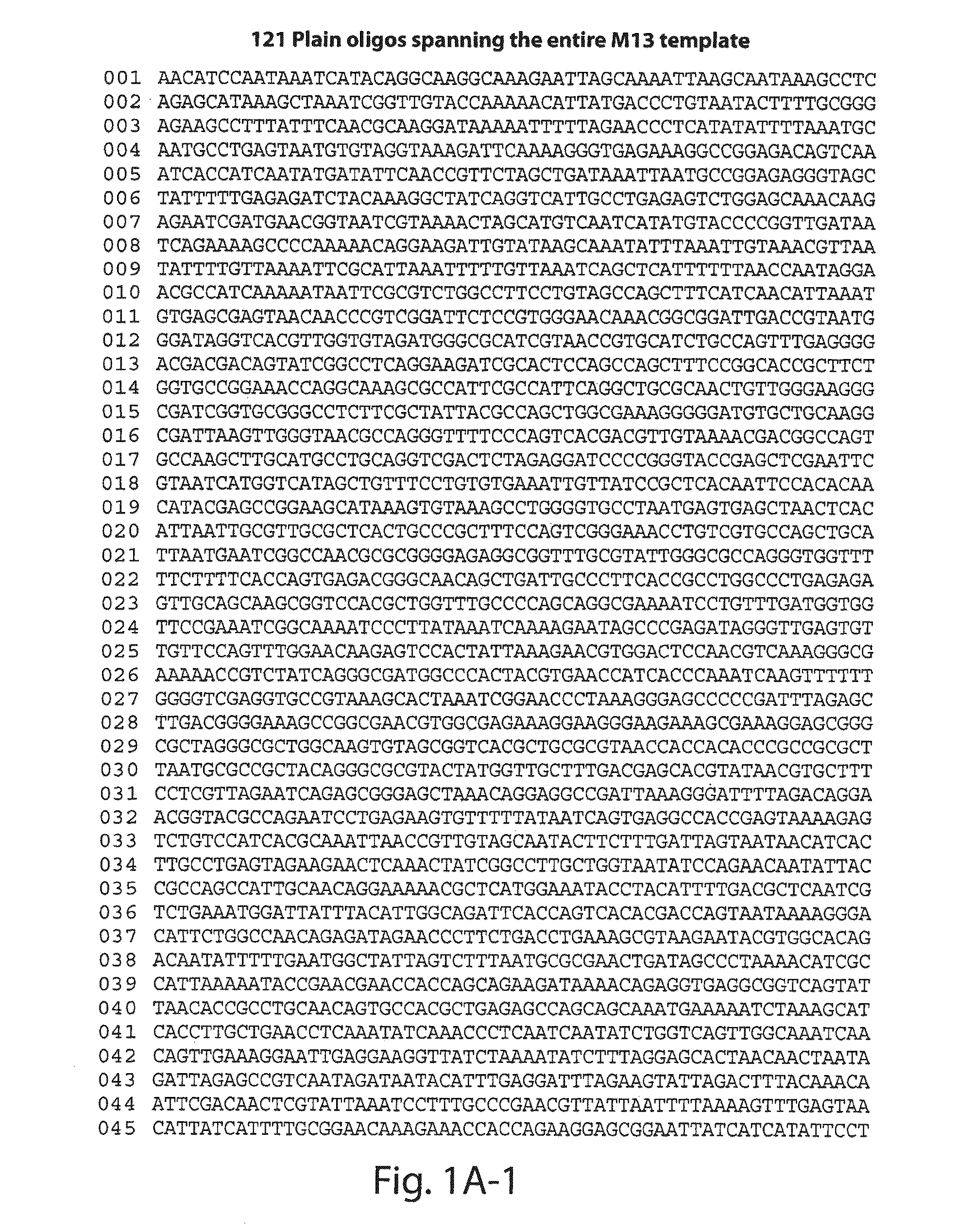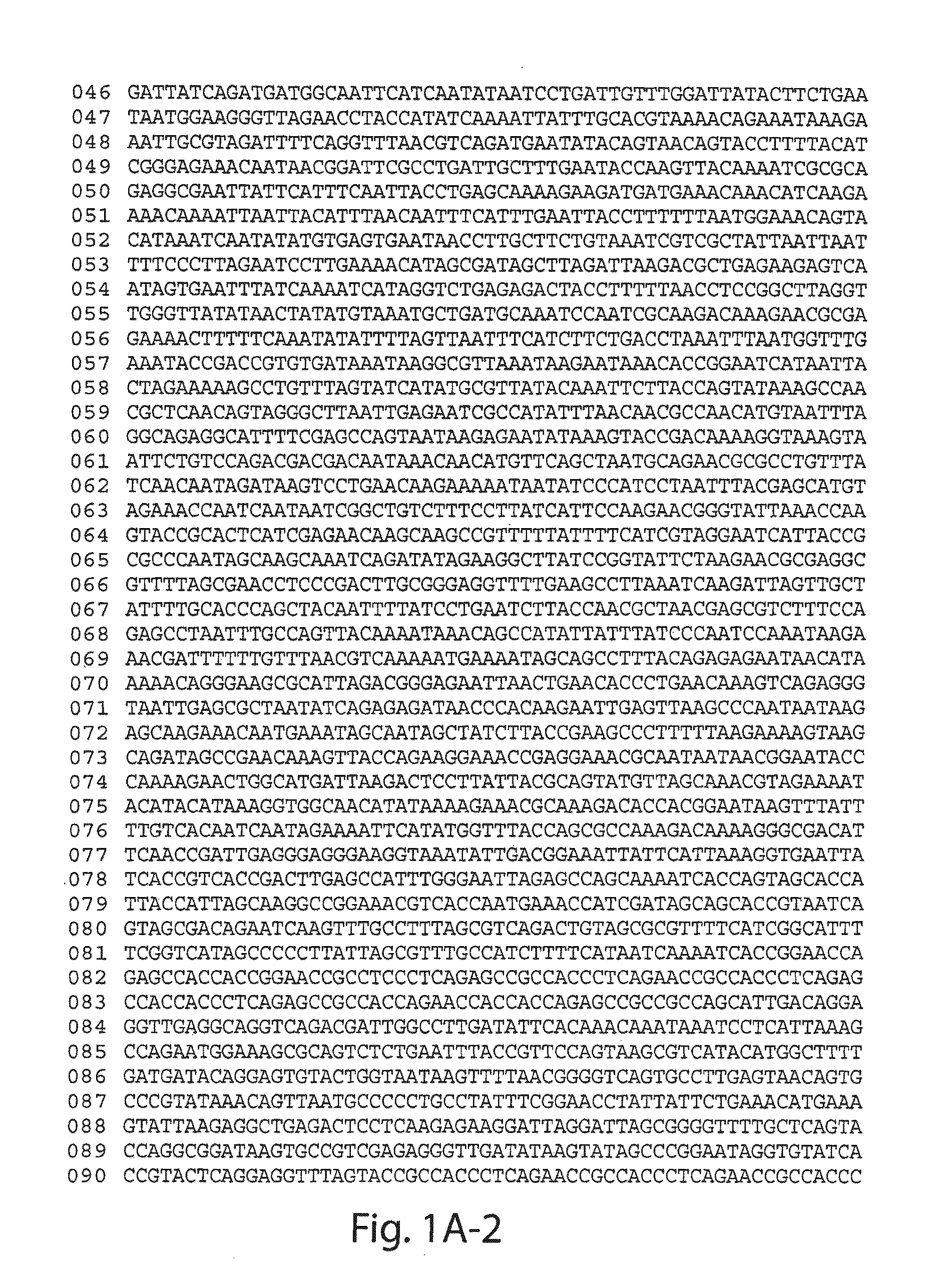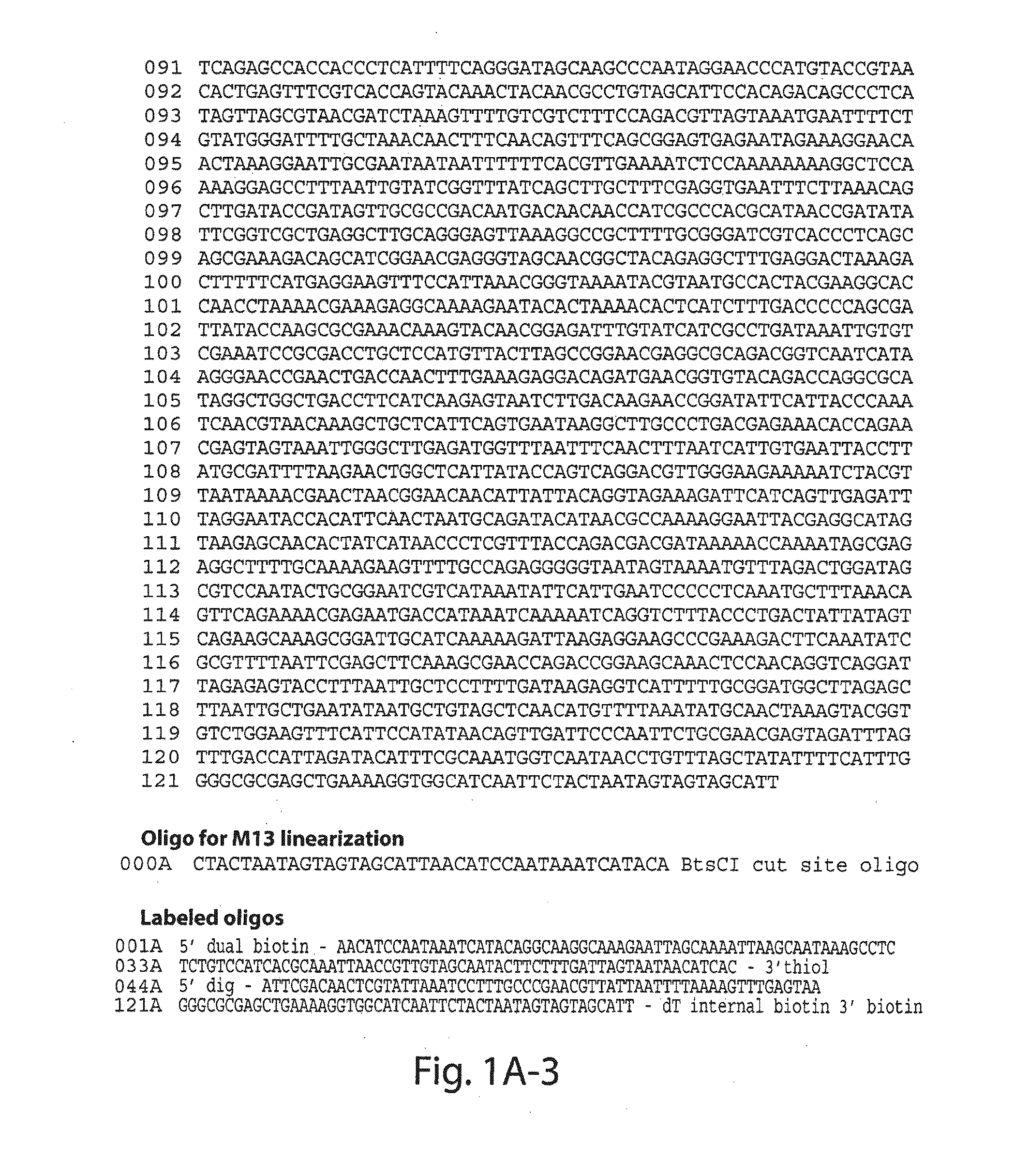Nucleic acid-based linkers for detecting and measuring interactions
a technology of nucleic acid and linkers, applied in the field of nucleic acid-based linkers for detecting and measuring interactions, to achieve the effect of greater binding strength
- Summary
- Abstract
- Description
- Claims
- Application Information
AI Technical Summary
Benefits of technology
Problems solved by technology
Method used
Image
Examples
example 1
Switchable Single Molecular Linkers
Materials and Methods
[0169]Linker Design and Construction:
[0170]All oligonucleotides were purchased from Bioneer, Inc., with the exception of the 5′ double-biotin oligonucleotide (Integrated DNA Technologies), the digoxigenin oligonucleotides (Integrated DNA Technologies), and a few plain oligonucleotides ordered with next-day service (Invitrogen).
[0171]The full sequence of all the oligonucleotides used are shown in FIG. 1A and are based on the M13 sequence given by New England Biolabs and used for previous DNA origami work. The oligonucleotides are stored at 100 μM at −20° C., and all mixing of oligonucleotides is done at these stock concentrations unless noted. We will refer to the numbering throughout this section as we explain the construction of the various linkers.
[0172]Two different kinds of linkers were designed and assembled based on techniques outlined from previous DNA origami work (Rothemund P. W. K. (2006); Douglas S. M. et al. (2009))...
example 2
Receptor-Ligand Dissociation Kinetics Elucidated by Electrophoresis of a Binary DNA Nanoswitch
Materials and Methods
[0205]Linkers were designed according to protocols for long (2580 bp) and short (600 bp) loops as described herein. (See also Halvorsen K. et al. (2011) Nanotechnology, 22: 494005 incorporated herein by reference.) Here, modified oligos (Bioneer, Inc.) containing a single biotin were used such that a single streptavidin molecule could close the loop. All other oligos were the same as those used previously. Briefly, looped constructs were made by mixing a long single-stranded DNA (M13mp18, in this case) with over 121 oligos that are complementary along its length. Two oligos spaced apart from each other had biotin modifications, causing a loop to form when streptavidin binds both. The constructs come together by self-assembly with a temperature ramp heating and cooling them.
Results
[0206]Recognizing that the nanoswitch conformation informs the receptor-ligand binding stat...
example 3
Encryption and Decryption Using Nucleic Acid Complexes
Materials and Methods
[0214]Oligonucleotides were designed and purchased (Bioneer, Inc.) to represent 8 different bits, which would be about evenly spaced on a 4% agarose gel. The lengths chosen were 20 nt, 22 nt, 25 nt, 28 nt, 32 nt, 37 nt, 43 nt, and 50 nt. For each length, 3 oligonucleotides were purchased: a randomly generated sequence, its complementary strand, and a random set with arbitrary bases. These are denoted A, A′, and B respectively.
[0215]To encode messages, the plain text message “Hello world” was first converted into binary code using 8 bit ASCII character encoding with the 8th bit as an even parity bit for error checking. Each letter was prepared using a mixture of A and B oligonucleotides to represent the 0s and 1s. As an example, the “H” in “Hello world” has an 8 bit binary representation of 01001000. The least significant bit is encoded in the smallest (20 nt) oligo, which is denoted oligo 1. To encode the “H”...
PUM
| Property | Measurement | Unit |
|---|---|---|
| time constants | aaaaa | aaaaa |
| time constants | aaaaa | aaaaa |
| temperature | aaaaa | aaaaa |
Abstract
Description
Claims
Application Information
 Login to View More
Login to View More - R&D
- Intellectual Property
- Life Sciences
- Materials
- Tech Scout
- Unparalleled Data Quality
- Higher Quality Content
- 60% Fewer Hallucinations
Browse by: Latest US Patents, China's latest patents, Technical Efficacy Thesaurus, Application Domain, Technology Topic, Popular Technical Reports.
© 2025 PatSnap. All rights reserved.Legal|Privacy policy|Modern Slavery Act Transparency Statement|Sitemap|About US| Contact US: help@patsnap.com



